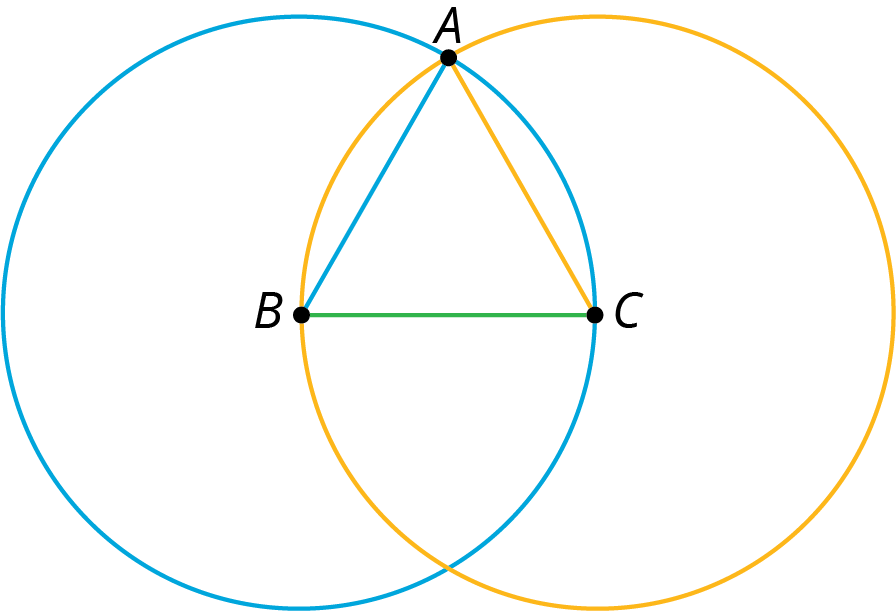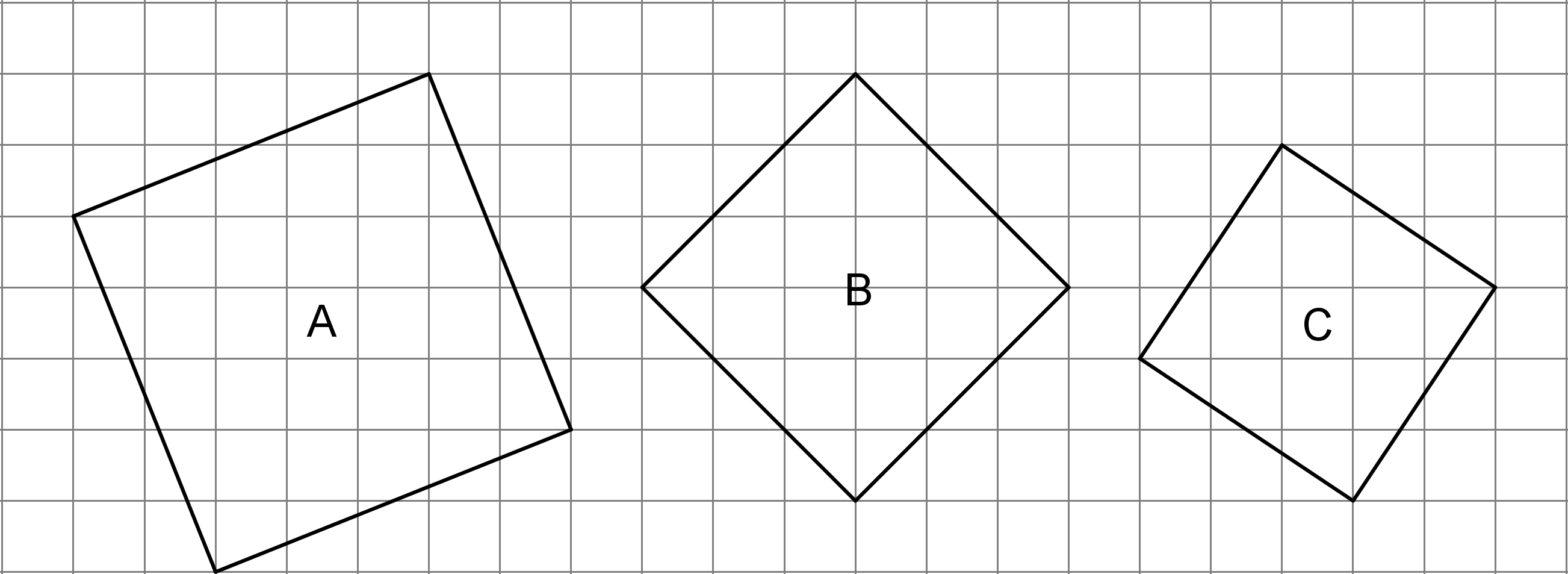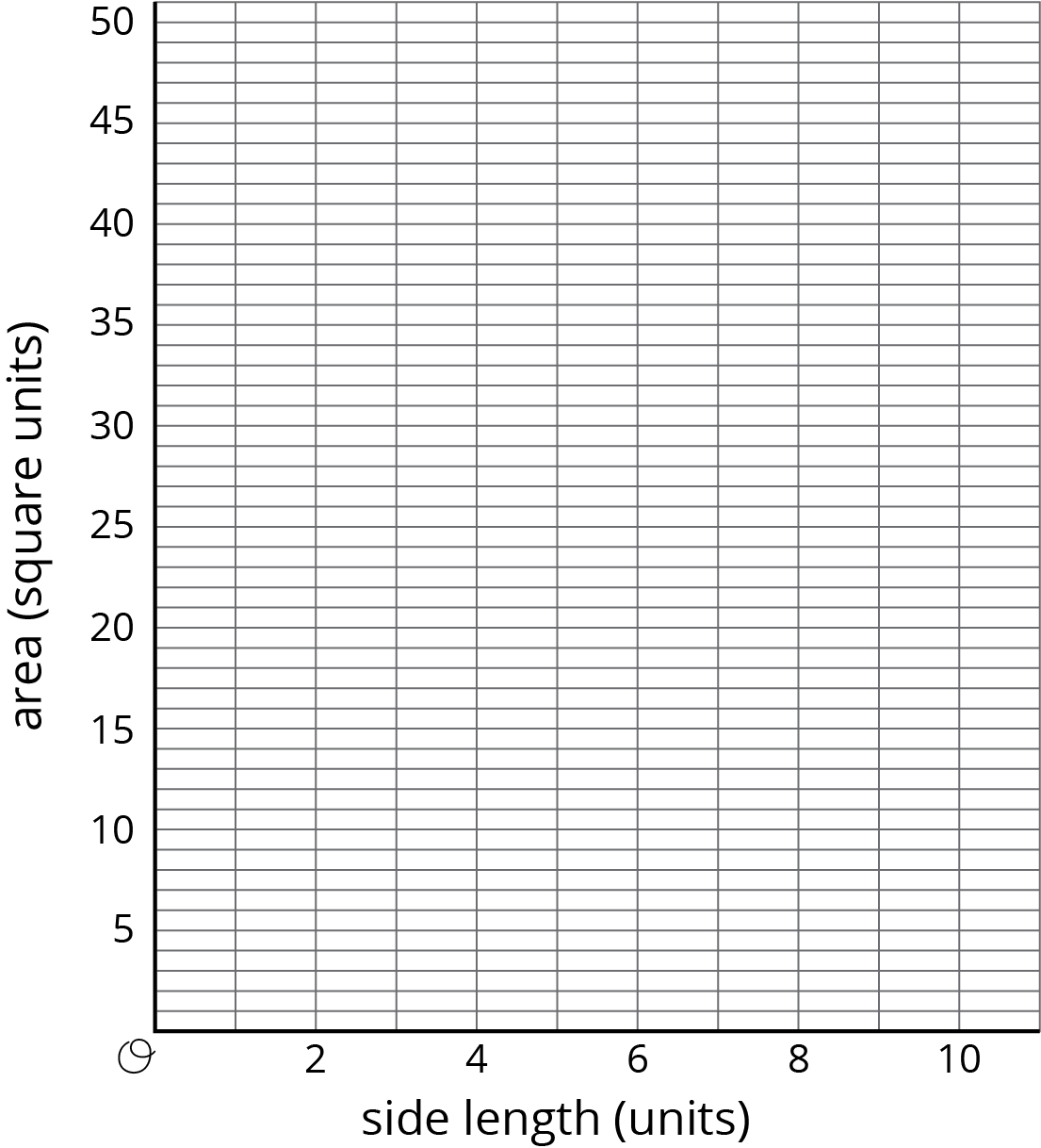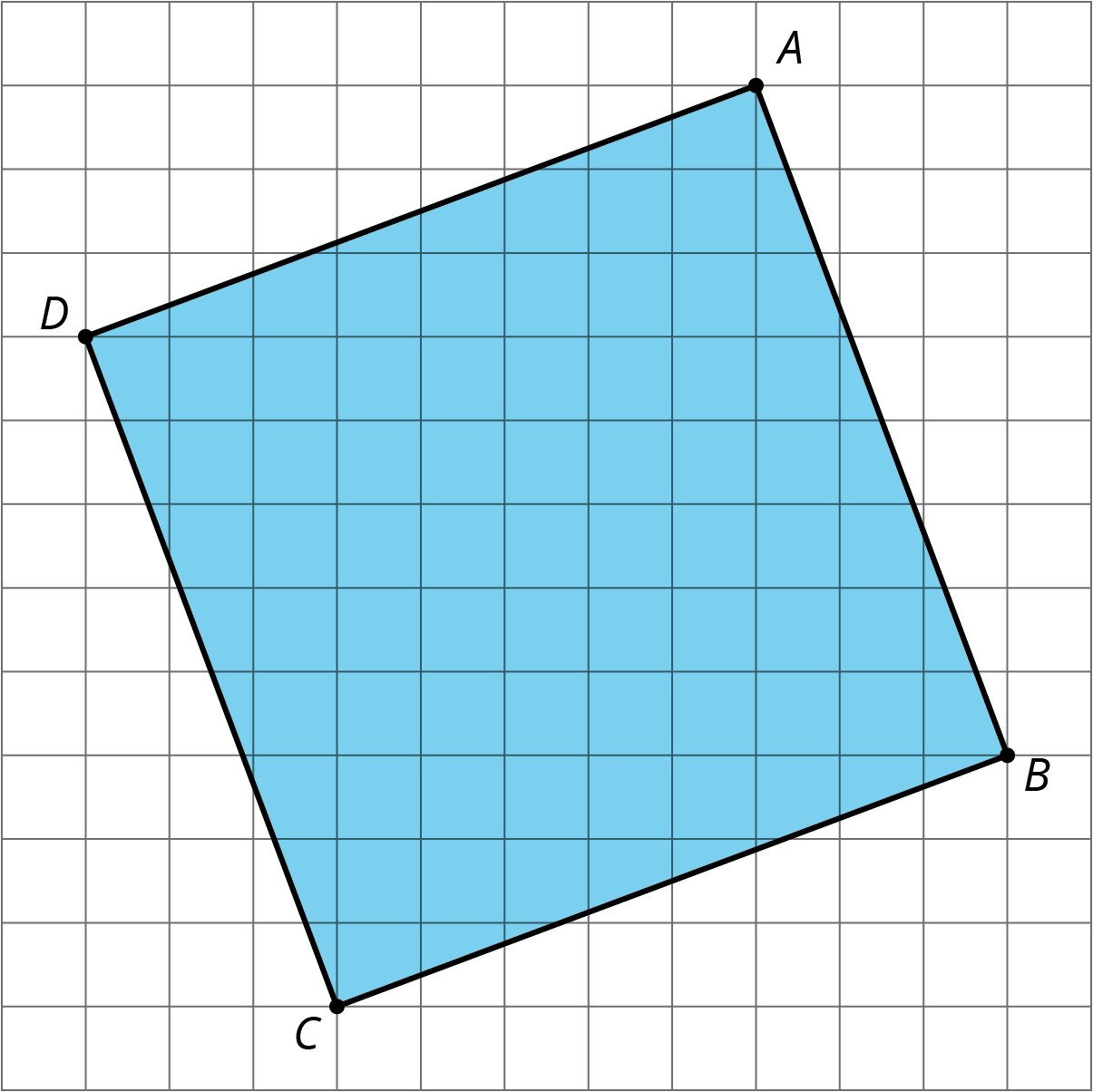Lesson 2
Side Lengths and Areas
2.1: Notice and Wonder: Intersecting Circles (5 minutes)
Warm-up
The purpose of this warm-up is to get students in the habit of seeing the same line segment being a part of two different figures (MP7). In this case, the sides of the triangle are also radii of the circles. This primes them to see the sides of the square in the next activity as the radius of a circle.
Launch
Arrange students in groups of 2. Display the diagram for all to see. Give students 1 minute of quiet work time to identify at least one thing they notice and at least one thing they wonder about the diagram. Ask students to give a signal when they have noticed or wondered about something. When the minute is up, give students 1 minute to discuss their observations and questions with their partner. Follow with a whole-class discussion.
Student Facing
What do you notice? What do you wonder?

Student Response
For access, consult one of our IM Certified Partners.
Activity Synthesis
A segment can be a part of more than one figure. In this case, the sides of the triangle are also the radii of the circles. Being able to see parts of a figure in more than one way is helpful for solving problems.
2.2: One Square (15 minutes)
Activity
The purpose of this activity is for students to estimate the side length of a square via a geometric construction that relates the side length of the square to a point on the number line, and verify their estimate using techniques from the previous lesson. Once students connect the side length to a point on the number line, they learn that this number has a name and a special notation to denote it: square root and the square root symbol. While this is students’ first formal introduction to square roots, they will have many opportunities to deepen their understanding of square roots and practice using square root notation in later activities and lessons.
Launch
Students in groups of 2. Give 1 minute quiet work time on the first problem and have students check in with a partner. Students continue to work. Follow with a whole-class discussion.
Design Principle(s): Support sense-making; Maximize meta-awareness
Student Facing
-
Use the circle to estimate the area of the square shown here:

-
Use the grid to check your answer to the first problem.

Student Response
For access, consult one of our IM Certified Partners.
Student Facing
Are you ready for more?
One vertex of the equilateral triangle is in the center of the square, and one vertex of the square is in the center of the equilateral triangle. What is \(x\)?

Student Response
For access, consult one of our IM Certified Partners.
Activity Synthesis
Select students to share how they determined the areas in each problem and how their answers compared.
Ask, “What do you think the actual side length of the square is? That is, what is the number that when squared is equal to 29?” If not brought up in students’ explanations, point out that while \(5.3^2\) is only 28.09, \(5.35^2\) is 28.6225, a number closer to 29, and ask what number they might try to square next.
Tell students that in the previous lesson and this lesson, we have seen squares that have areas that are whole numbers, but the side lengths are not whole numbers. In this activity, we saw that we can locate a point on the number line (the \(x\)-axis is a number line) that corresponds to the side length, and that this number is a square root, which we write like this:
\(\displaystyle \sqrt{29}\)
This is the way we write the exact length of the side of a square with area 29 square units. So \(\left(\sqrt{29}\right)^2=29\).
Supports accessibility for: Memory; Language
2.3: The Sides and Areas of Tilted Squares (15 minutes)
Activity
In this activity, students continue to develop their understanding of square roots. Students first find the areas of three squares, estimate the side lengths using tracing paper, and then write the exact side lengths. Then they make a table of side-area pairs. They then graph the ordered pairs from the table and use the graph to estimate the values of squares with non-integer side lengths, such as the ones they drew in the previous activity.
Launch
Arrange students in groups of 2. Provide access to calculators. Remind students about the meaning and use of square root notation. Have students work together on the first problem and check each other’s work. Have them make their graphs independently and then check with their partners that they look the same. Follow with a whole-class discussion.
Supports accessibility for: Organization; Attention
Student Facing
-
Find the area of each square and estimate the side lengths using your geometry toolkit. Then write the exact lengths for the sides of each square.

- Complete the tables with the missing side lengths and areas.
side length, \(s\) 0.5 1.5 2.5 3.5 row 1 area, \(a\) 1 4 9 16 side length, \(s\) 4.5 5.5 6.5 7.5 row 1 area, \(a\) 25 36 49 64 -
Plot the points, \((s, a)\), on the coordinate plane shown here.
-
Use this graph to estimate the side lengths of the squares in the first question. How do your estimates from the graph compare to the estimates you made initially using your geometry toolkit?
-
Use the graph to approximate \(\sqrt{45}\).
Student Response
For access, consult one of our IM Certified Partners.
Launch
Arrange students in groups of 2. Provide access to calculators. Remind students about the meaning and use of square root notation. Have students work together on the first problem and check each other’s work. Have them make their graphs independently and then check with their partners that they look the same. Follow with a whole-class discussion.
Supports accessibility for: Organization; Attention
Student Facing
-
Find the area of each square and estimate the side lengths using your geometry toolkit. Then write the exact lengths for the sides of each square.

- Complete the tables with the missing side lengths and areas.
side length, \(s\) 0.5 1.5 2.5 3.5 area, \(a\) 1 4 9 16 side length, \(s\) 4.5 5.5 6.5 7.5 area, \(a\) 25 36 49 64 -
Plot the points, \((s, a)\), on the coordinate plane shown here.

- Use this graph to estimate the side lengths of the squares in the first question. How do your estimates from the graph compare to the estimates you made initially using your geometry toolkit?
-
Use the graph to approximate \(\sqrt{45}\).
Student Response
For access, consult one of our IM Certified Partners.
Activity Synthesis
Invite students to share their graphs from the second problem and display the graph for all to see. Ask: “What relationship does the graph display?” (The relationship between the side length and area of a square.) Select 2–3 students to share their answers to the last problem, including how they used the graph to estimate \(s\) for the tilted square they drew earlier.
Design Principle(s): Support sense-making
Lesson Synthesis
Lesson Synthesis
The purpose of this discussion is to check that students understand the definition of square roots as they relate to side lengths of squares. Here are possible questions for discussion:
- “What does it mean when we write \(\sqrt{100} = 10\) in terms of squares and side lengths?” (It means that a square with area 100 has side lengths of 10.)
- “If \(\sqrt{17}\) is a side length of a square, what does that mean about the area?” (The area is 17 square units.)
- “Look at the graph of area as a function of side length. Should the points on the graph be connected? What would that mean in terms of squares and side lengths?” (Yes, the points should be connected because it’s possible to have any positive value as a side length and then squaring that value gives the area of the square with that specific side length.)
2.4: Cool-down - What Is the Side Length? (5 minutes)
Cool-Down
For access, consult one of our IM Certified Partners.
Student Lesson Summary
Student Facing
We saw earlier that the area of square ABCD is 73 units2.

What is the side length? The area is between \(8^2 = 64\) and \(9^2 = 81\), so the side length must be between 8 units and 9 units. We can also use tracing paper to trace a side length and compare it to the grid, which also shows the side length is between 8 units and 9 units. But we want to be able to talk about its exact length. In order to write “the side length of a square whose area is 73 square units,” we use the square root symbol. “The square root of 73” is written \(\sqrt{73}\), and it means “the length of a side of a square whose area is 73 square units.”
We say the side length of a square with area 73 units2 is \(\sqrt{73}\) units. This means that
\(\displaystyle \left( \sqrt{73}\right)^2 = 73\)
All of these statements are also true:
\(\sqrt{9}=3\) because \(3^2=9\)
\(\sqrt{16}=4\) because \(4^2=16\)
\(\sqrt{10}\) units is the side length of a square whose area is 10 units2, and \(\left(\sqrt{10}\right)^2=10\)
